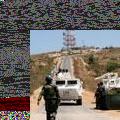The 93,000 U.N. peacekeepers deployed in 15 conflict areas around the world are saving lives and bringing stability to troubled areas, according to U.S. Ambassador to the United Nations Susan Rice. But she also says they are overstretched and need greater international support.
Rice spoke before the House Foreign Affairs Committee on July 29. Rice said U.N. internal management reforms could boost the effectiveness of the peacekeeping operations, and that the benefit of U.N. peacekeepers is not only to the areas they are deployed, but also to the international community, which may be affected if conflicts spread over international boundaries.
The Obama administration is providing support to peacekeepers in training, recruitment, equipment and transportation, as well as paying $2.2 billion in peacekeeping costs. The United States has also trained 81,000 peacekeepers through the U.S. Global Peace Operations Initiative.
The Obama administration is also willing to consider directly contributing more military observers, military staff officers, civilian police and other civilian personnel, including female personnel, to operations. According to Rice, the United States and other members of the Security Council need to ensure that mandates given to peacekeeping missions are well-tailored, achievable and rational.
At the same time, Rice said, peacekeeping missions are not always the right answer in all situations. Regional forces or other types of deployments might be more effective. In Somalia, for example, there is a tradition of violent opposition to outsiders of all sorts. The African Union's peacekeeping mission in Somalia is providing support to the population and is not viewed with the same skepticism and hostility that the U.N. might be, Rice said.
The United Nations' management reforms can be strengthened to enable a peacekeeping force to deploy more rapidly and to ensure that its operations are performed with greater transparency, efficiency and cost-effectiveness, Rice said. According to Rob Farrington, who heads the advanced vehicle group at the National Renewable Energy Laboratory in Colorado, the most promising solution to issues such as energy security and climate change is to get people to use transportation other than individual vehicles.
Much has been said about emerging technologies such as gasoline-electric hybrid and plug-in hybrid vehicles. But Farrington says that the question of which one of these is the best technology misses the point. Public transport, he says, is not a technology solution, and it's not fashionable — but the sooner we consider it seriously, the better. Most experts believe that a mix of advanced automotive technologies, better public transport and other alternatives to driving will be needed to reach the ambitious goals set by President Obama for 2020: a 14 percent cut in U.S. greenhouse gas emissions below 2005 levels and 1.8 billion barrels of petroleum saved through fuel efficiency. Passenger vehicles and light trucks account for almost 45 percent of U.S. petroleum demand and 17 percent of greenhouse gas emissions.
Making public transport a viable alternative to car commuting will require many infrastructure investments. Congress is likely to increase funds for public transport infrastructure when it considers a transportation bill later this year.
New technologies, like plug-in electric hybrid vehicles, are unlikely to make a significant impact on the market in the next few decades, according to analysts. Farrington said it would take 15 years to replace the entire U.S. passenger auto fleet if every vehicle sold today were a hybrid or plug-in hybrid. The focus should be on improving internal-combustion engines and discouraging individual driving, experts say.
Most analysts agree that research on advanced auto technologies should accelerate. Farrington feels that a narrow focus on technology reduces attention on public transport and more compact communities built around public transportation.
Efforts to address these issues are complicated because the goals of increasing energy security and decreasing global warming are not always compatible. For example, biofuels were recently viewed as a solution to both U.S. energy and climate problems. In 2007, Congress approved a fivefold increase in their production. But producing biofuels is energy-intensive, and a number of studies have cast doubt on the climate benefits of biofuels, primarily corn-based ethanol.
The Obama administration is working to produce comprehensive and consistent national energy and transportation strategies. It is a challenge, however, as many different agencies have authority over different aspects of the related issues.

